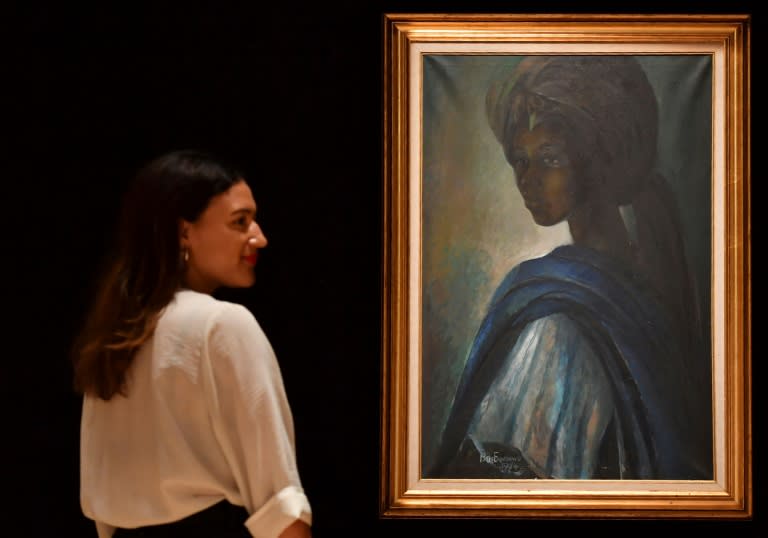Hunting for the woman in the 'African Mona Lisa'
She's been described as "the African Mona Lisa", the subject of a long-lost series of three paintings by the artist considered the father of Nigerian modernism. But like Leonardo da Vinci's most famous portrait, finding out more about the woman in Ben Enwonwu's "Tutu" has so far been elusive, even for her extensive extended family. One of the missing works, which was discovered in a north London flat, goes on sale in the British capital on Wednesday and is expected to fetch 250,000 pounds ($347,000, 282,000 euros). Enwonwu was professor of fine arts at the university in Ile-Ife, the cradle of the Yoruba people in southwest Nigeria, when he met Adetutu Ademiluyi and painted her in 1973 and 1974. The painting of the Yoruba princess by an ethnic Igbo artist became a symbol of national reconciliation at a delicate time in Nigeria's history. A brutal civil war had ended just four years earlier between federal forces and Biafran separatists wanting an Igbo homeland in the southeast. - Royal stock - What is known about "Tutu" is that she was the granddaughter of the traditional ruler, Ademiluyi Ajagun, the Ooni (king) of Ife, who died in 1930. He is said to have married up to 47 times, had many mistresses and, unsurprisingly, many children. Surviving relatives in Ife said they remember an Adetutu in the family. "Adetutu was... one of the daughters of Kabiyesi (king) Ademiluyi," said Olori (queen) Anifowoshe, who added that she was the only surviving wife of the former monarch. But Anifowoshe, who is said to be more than 100, couldn't recall if Adetutu married or had children and told AFP: "She died many years ago." Cecilia Ayoka is another centenarian and was married to Prince Okero Ademiluyi, a son of the former king. "I used to know Adetutu in those days but for some years now I haven't heard anything about her," she added. "Not many people knew Adetutu because Ademiluyi is such a large family. "My husband who happened to be one of the direct children was over 120 years before he died and he had more than 40 wives," she said. "Only three of us are still alive." - 'I can't believe she's alive' - Giles Peppiatt, the head of modern and contemporary African art at Bonhams auction house who found what he describes as "the mythical picture", has been in Nigeria doing his own detective work. Last week, he travelled the 200 kilometres (125 miles) from Lagos to Ife and said the older women in the family may have been referring to an Adetutu of a different generation. He said family members told him a younger Adetutu was alive, in her late 60s and living in Lagos, which would tally with her being aged in her late teens when she sat for Enwonwu. "Tutu is one of about 300 (children). That's why it's actually quite difficult to find her," he said. He added: "It's amazing. I can't believe she's alive." Enwonwu -- famous for creating a bronze sculpture of Queen Elizabeth II -- died in 1994 and appears not to have left any clues about his subject. At his studio in Lagos, the artist's son, Oliver, said he can't recall his father ever discussing it and doesn't know where the remaining two paintings are. But the 42-year-old, who is president of the Society of Nigerian Artists, said he was pleased about the increasing recognition his father was getting. "It's a thing of joy that several decades after his death my father's works are being appreciated globally," he added. Peppiatt said although he was hopeful of finding the real Tutu after so long, it had no bearing on the painting's worth as art. "I will say, either way, I think it's... just a beguiling picture, it's an amazing portrait and whether we find her or not doesn't really affect the value of the work. "The value of the work is what he painted in 1973, not whether we find the sitter in 2018."



